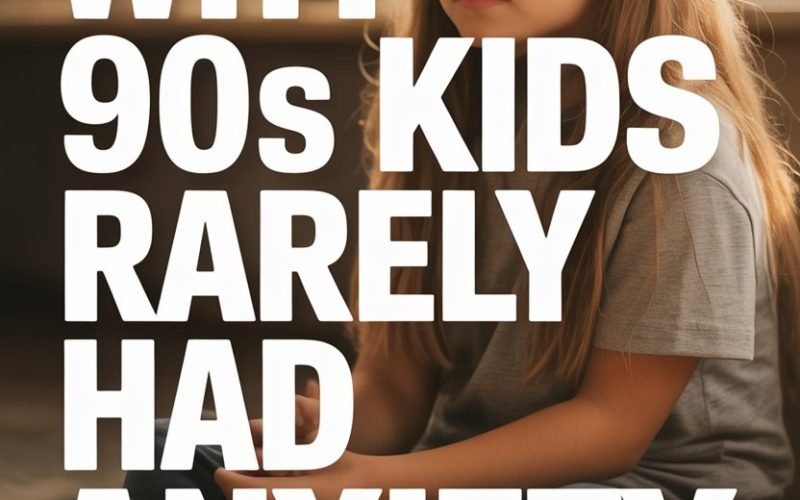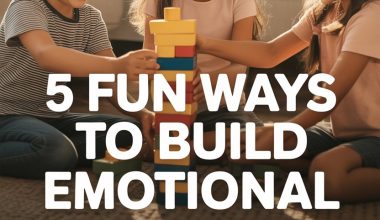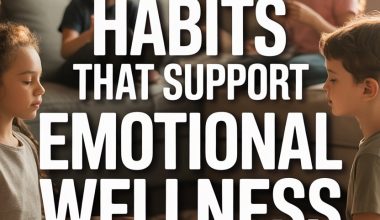If you’re a parent today, odds are you’ve heard more about childhood anxiety in the last month than your own parents heard in your entire childhood.
“Anxiety” is tossed around like confetti at a birthday party, and the culprit, people say, is everything from TikTok to gluten. But ask anyone who grew up in the 90s, and you’ll probably get a blank stare.
Anxiety? Was that the name of a Goosebumps villain?
Let’s take a candid, slightly nostalgic look at why kids from the 90s seemed to float through life with less anxiety—and what today’s parents might steal from that playbook.
Freedom Wasn’t Just for Weekends
Once the velociraptor screech of the school bell rang, the world belonged to us. Backyards, cul-de-sacs, the neighbour’s driveway—every patch of ground was fair game.
Most parents didn’t expect an hourly check-in unless you were bleeding or someone was stuck in a tree (and even then, they’d shout advice from the window).
Having that autonomy meant you got to make decisions, mess up, and fix it yourself—sometimes with a sibling’s questionable medical advice, sometimes with nothing but a crumpled tissue and sheer willpower.
According to child development research, that sense of control over your own environment can actually reduce anxiety in children. It’s hard to overthink when your brain is busy plotting which friend’s house has the best snacks.
The Art of Boredom Was Alive and Well
A phrase 90s parents wielded like a magic wand: “Go entertain yourself.” There were long stretches of time with nothing structured, no screens, and no adults orchestrating your every move.
Boredom, it turns out, is a secret ingredient for mental resilience.
When you’re left alone with your thoughts, a stick, and approximately 6,000 Lego pieces, the world seems less threatening. You learn to fill the quiet, not fear it.
Psychologists note that creative play and unstructured time help children process emotions and regulate stress (yes, even if it occasionally involved setting up elaborate booby traps for siblings).
Privacy Was a Given, Not a Password
Back then, your social life ended when you shut the door behind you at home. That’s it. No midnight group chats, no Snapchat streaks to maintain, no 24-hour highlight reel of everyone else’s life.
If you wanted to know what your best mate was eating for dinner, you’d have to wait until lunch at school the next day—and by then, you weren’t that bothered.
The constant digital connection today means many kids never truly switch off. Their brains are always “on,” analyzing social cues and fearing missing out (FOMO, if we’re being clinical).
Research from the American Psychological Association suggests that this perpetual connectivity is linked to higher rates of anxiety in children and teens. Turns out, ignorance really was bliss.
Parental Oversight Had a Lighter Touch
Helicopter parenting? That was for rich people with actual helicopters. Most 90s parents had a “check in when the streetlights come on” approach.
If something went wrong—a scraped knee, a failed maths test—you were expected to pick yourself up, dust yourself off, and try again, possibly after a stern talking-to and a sandwich.
This hands-off attitude didn’t mean parents didn’t care. It simply assumed you were hardy enough to handle most things. When kids feel trusted and capable, their anxiety levels tend to drop.
Over-parenting, on the other hand, can leave children feeling fragile and unprepared for life’s inevitable stumbles.
Mistakes Were Private, Not Public
Trip and fall during PE? Only your class saw it, and they’d already forgotten by lunchtime. Flub your line in the school play? It lived on in memory, not on YouTube.
Today, any gaffe could go viral. The possibility that every awkward moment might haunt you forever is enough to make anyone anxious.
Social media has created a world where every misstep is potentially permanent, and that pressure is very real—especially for teens.
Experts at Common Sense Media have pointed out that the anxiety linked to social media use is on the rise, with many kids reporting fear of being shamed or excluded online.
Playdates Were for Kids, Not Parents
Nobody scheduled “enrichment activities” or “structured play” in the 90s. We had playdates, but they weren’t called that. They were just “can I go over to Jamie’s?”
Parents barely got out of the car—sometimes you didn’t even tell them where you were going, you just left a note that you’d be back for tea.
Without an adult hovering or arranging every moment, children learned to negotiate, compromise, and resolve their own squabbles. Conflict resolution is a muscle, and in the 90s, it got a daily workout.
This independence helped keep anxiety at bay by building confidence. Modern parents can foster this by stepping back during play and letting kids sort out their own drama (unless actual blood is involved, obviously).
School Was Home, Not Home Was School
Schoolwork happened at school. Home was a sanctuary—a place for cartoons, snacks, and the occasional sibling wrestling match.
Rarely did teachers expect parents to be unpaid tutors, and the line between school and home was clear (and fiercely guarded).
Now, with digital classrooms and endless notifications, it’s easy for school stress to seep into every corner of home life.
Creating boundaries around learning time and family time can help mimic that precious after-school “off switch” so many 90s kids enjoyed.
The Noise Was Just… Noise
Not every feeling was labelled or pathologized. Bad day? Maybe you needed food, maybe you needed sleep, or maybe your sibling was simply being a pest.
Either way, you were encouraged to shake it off. The grown-ups in your life weren’t looking for signs of catastrophe in every eye roll or sigh.
Modern awareness of mental health is wonderful—and needed—but over-focusing on every mood swing can amplify anxiety rather than soothe it.
Normalising the ups and downs of childhood instead of treating every hiccup as a crisis can help children bounce back from stress, not spiral into worry.
Instant Gratification Wasn’t a Thing
Patience was a muscle every 90s kid developed by waiting for dial-up internet to connect, taping songs off the radio, or saving up pocket money for something special.
Not everything was available immediately, which built grit and delayed gratification.
That ability to wait, fail, and try again is one of the best antidotes to anxiety. Stanford’s famous “marshmallow test” showed kids who could delay gratification went on to have better mental health outcomes.
Turns out, waiting for your favourite show to come on Saturday morning was character-building after all.
What Can Parents Do Now?
No one’s suggesting smashing the WiFi router and going full retro (unless you secretly want to). But a few tweaks borrowed from the 90s can make family life less frazzled for everyone.
- Carve out unstructured, screen-free time. Let kids get bored. Boredom is where creativity and resilience start.
- Pull back on micro-managing every social interaction. Give kids space to fight their own battles and fix their own mistakes.
- Model patience and self-soothing. When things go pear-shaped, stay calm and show your kids how to cope.
- Put boundaries around digital devices. Phones and tablets don’t need to be bedtime companions.
- Embrace imperfections. Mistakes are part of growing up, not something to fear or hide.
A Little Retro Goes a Long Way
Childhood isn’t a competition or a tech arms race. Most 90s kids grew up with scraped knees, mismatched socks, and a healthy disregard for parental authority—plus surprisingly low anxiety.
Our world has changed, but the basics of resilience haven’t.
Give your children a little of the freedom, boredom, and privacy you had, and you might just watch their worry melt away faster than a Frosty Fruit in summer.
Now, if you’ll excuse me, I have to go ring my mum on the landline.





